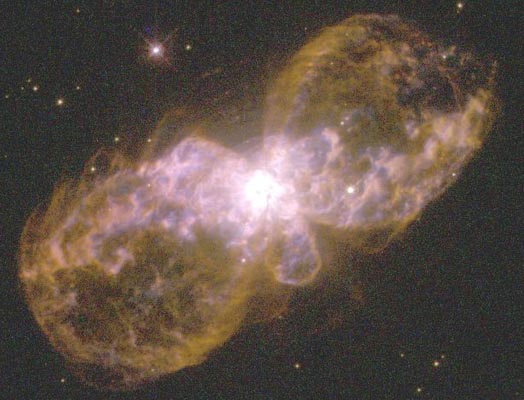The Hubble 5 Planetary Nebula

Explanation:
The Hubble Double Bubble Planetary Nebula
is bubbling over with excitement.
More mundanely known as
Hubble 5, this
bipolar planetary nebula is
being created by a
hot wind of particles
streaming away from the central star system.
The hot gas expands into the surrounding
interstellar medium in a fashion similar to the
inflation of
hot air balloons. A
supersonic shock-wave can form at the boundary,
causing newly excited gas there to shine as
electrons recombine with resident
elements.
In the
above picture, colors are assigned according
to the energy of the recombinant radiation.
This star system lies about 2200 light-years from
Earth, and likely includes a
Sun-like star slowly transforming itself into a
white dwarf.
Authors & editors:
Robert Nemiroff
(MTU) &
Jerry Bonnell
(USRA)
NASA Web Site Statements, Warnings,
and Disclaimers
NASA Official: Jay Norris.
Specific
rights apply.
A service of:
LHEA at
NASA /
GSFC
& Michigan Tech. U.

